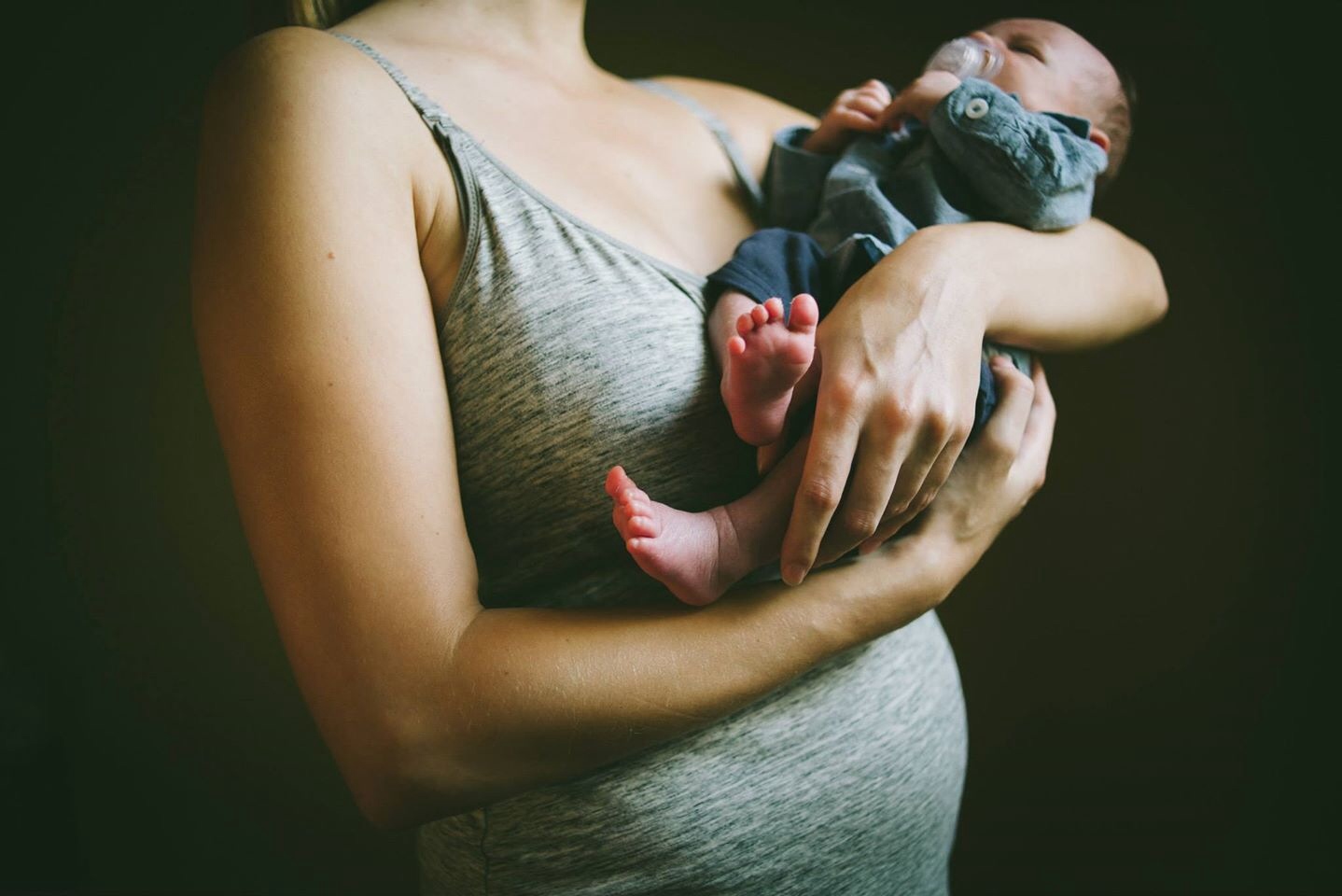
Vaginal bleeding after a C-section occurs because the lining of the uterus, which has grown to be very thick during pregnancy, sloughs off after delivery and removal of the placenta. The resulting discharge, which is called “lochia,” is a mix of this uterine tissue, blood, and mucus. Lochia starts off red with small clumps, then changes into brown, pink, and creamy white colors.
Women who had a C-section will typically have less lochia than those with vaginal births. That's because doctors clean out the uterus after a C-section to ensure the placenta and membranes have been completely removed, says Amy Magneson, M.D., an Ob-Gyn with CareMount Medical in New York. This clearing-out happens naturally with vaginal births, so there’s more tissue and blood that needs to come out.
How long do you bleed after a C-section?
Bleeding will be heaviest in the first few days after a C-section, then it will taper off as you continue recovery, says Pamela Promecene, M.D., professor and obstetrician with McGovern Medical School at UTHealth/UT Physicians in Houston. “Bleeding also varies from one patient to another, but it may occur for up to four-six weeks,” says Dr. Promecene.
What if I bleed longer than six weeks after a C-section?
Some women will have bleeding that continues for longer than normal. This can happen for a few reasons. Occasionally, part of the placenta or membranes that make up the amniotic sac is left behind after removal. Having even a small amount of membranes or placenta still attached to the uterine wall can lead to quite a bit of bleeding.
Another reason for bleeding longer than 6 weeks is choriocarcinoma, a rare condition that can develop after a miscarriage, termination, or delivery. It happens when some of the cells of the placenta continue to grow, despite the pregnancy being over. Choriocarcinoma can be a very dangerous condition, since the bleeding continues until the patient is treated by her physician.
Lastly, placement of an IUD (intrauterine device) or starting birth control pills after delivery can also cause of abnormal bleeding. Most of these conditions are harmless, but the bottom line is that any bleeding after 6 weeks should be discussed with a health care provider.
How can you control the bleeding after a C-section?
In most cases, women should wear extra-absorbent maternity pads to control the bleeding after a C-section. You’ll probably get some of these pads at the hospital. Be sure to change them regularly, and switch to thinner sanitary pads as the postpartum bleeding slows down. Note that most doctors will advise against using tampons in the weeks after birth.
When should I worry about vaginal bleeding after a C-section?
According to Dr. Promecene, you should contact your doctor “if the bleeding tapers off, then becomes heavy with clots” or if it has a foul-smelling odor. These symptoms might signal an infection.




